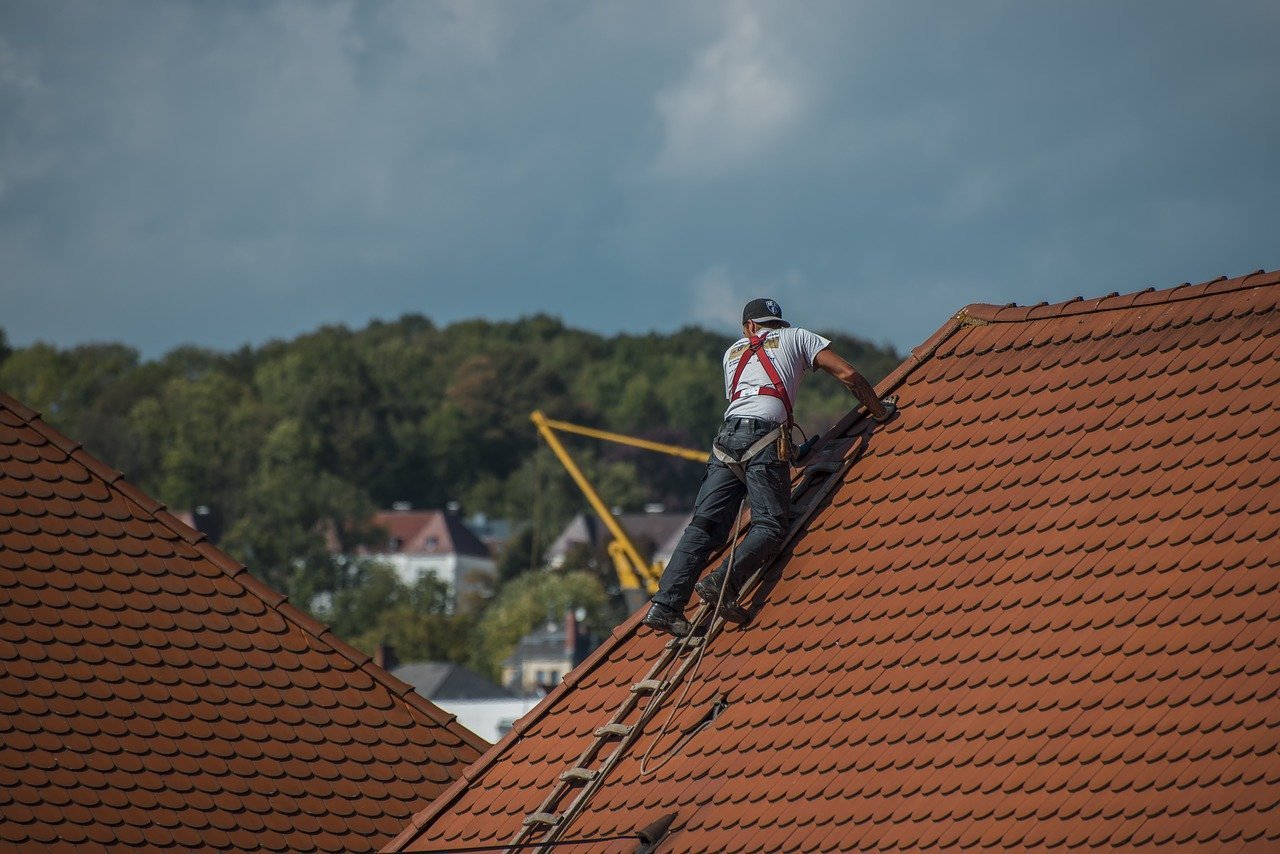Table of Contents Show
Each year, an estimated five million new roofs get installed in the United States alone. These include new systems for new constructions and roof replacement for existing buildings.
As a homeowner yourself, you may be wondering whether your roof is up for replacement or if you could still fix it. There are several ways to tell when to go for which, and we’ve listed the primary ones below.
Read on so that you can make the right decision when it comes to fixing vs. replacing your existing roof.

The Length of Time Your Roof Has Been in Place
Asphalt shingle, the most common type of roofing material in the US, can last up to two decades. Metal roofing has an estimated lifespan of 40 to 80 years, which is why they’re also becoming more popular.
Clay, concrete, and slate roofs are some of the longest-lasting, as they can be in service for 100 years or longer.
If your roof is nearing the end of or has exceeded its estimated service life, it may be time for a Roof Replacement. It may look fine on the surface, but it may already have a compromised underlayment.
The underlayment is the barrier that keeps moisture out of your home, so if it goes bad, you’re at risk of seepage.
If you’re uncertain of your roof’s age, call your local government, as they most likely have records. They can tell you about the roof’s date of installation, if it’s the first-ever roof, or if it’s a replacement.
Next, call a reputable, licensed local roofer for a complete roof inspection. The expert can determine if there’s damage, and if so, how severe the problem is. They will then discuss possible solutions, be it extensive repairs or replacement.
Extensive Roof Damage
The median salary of US roofers is about $21 per hour, but that’s only for their labor. This doesn’t include the cost of all necessary repair parts yet. Extensive roof repairs can easily cost hundreds, even thousands of dollars.
As for the average roof replacement cost, it’s between $5,000 and $10,000. Asphalt shingles are usually on the lower end of this range, with some new systems costing only $4,000. Clay, being one of the longest-lasting roofing materials, can cost $25,000 to $50,000.
That’s a lot of money, but keep in mind that the average cost to replace a roof already includes a warranty. What’s more, getting a new roof means you won’t have to worry about another replacement for the next 20 years or so.
If the estimated cost to fix your roof is about a third of a full replacement, go with a replacement.
Let’s say your options include replacing roof shingles for about 3/4 of your roof vs. getting a new roof. If you were to replace individual shingles, you’d likely end up with a bill that’s over half of the cost of a new roof. Sure, you’ll get a warranty, but that would only be for the new shingles.
If the older shingles give out next year, you could spend hundreds of dollars to get them fixed or replaced. For this reason, it makes more sense to get a full replacement in one go.
Read Also:
Multiple Signs of Water Penetration
Surveys found that about half of US homes have visible signs of dampness or mold issues. Many of these are due to leaking plumbing pipes, but many others result from faulty roofs.
Roof defects, such as issues with the underlayment, can allow water to seep all the way into your home. The excess moisture can allow molds to proliferate and affect indoor air quality.
Molds not only smell unpleasant; they can also be a health risk for the 10% of Americans with mold allergies.
Molds can affect people without allergies, too, causing symptoms like wheezing and sniffles. So, if you or anyone at home experiences these, take a look at your attic or ceiling.
Water stains scattered all over your attic or ceiling are indications of a leaky roof. They’re often round discolorations, but they can also be vertical or horizontal streaks. They can be dry, damp, or even have molds growing on or around them.
If you catch a leak early, you may only need to replace a small portion of your roof. However, multiple large leaks signal more extensive damage. In this case, it may be best for you to invest in a full replacement.
Age Plus the Potential of Future Damage
Even if your roof is only 10 years old, it’s possible that it no longer meets the latest building codes. After all, these standards get updated every three years. One reason for these changes is to account for ever-changing environmental factors.
A perfect example is the increasing number of hurricanes. Storms like Hurricane Harvey used to occur only once every 100 years, but they can now occur once every 16 years. There’s also evidence that storms are becoming more intense.
If you’ve already had your roof fixed a few times, it may no longer be able to withstand even more severe weather. Consider having a local licensed roofer inspect the potential flaws of your roof.
If there are too many issues, especially its ability to weather bad weather, it may be time for a new system. Today’s high-quality roofing systems can withstand harsher conditions like stronger winds. They also come with stronger UV protection that helps slow UV degradation.
Don’t Put Off Roof Replacement or Repairs
Whether you need roof replacement or repairs, the most crucial thing is to get it serviced ASAP. Otherwise, you’ll be at risk of more severe problems, such as mold or water damage.
Also, keep in mind that bad weather can hit anytime. By getting roof services now, you can prevent existing issues from worsening.
Ready for more ideas on how to make your home safer, healthier, and comfier? Then be sure to check out our recent home improvement guides!










